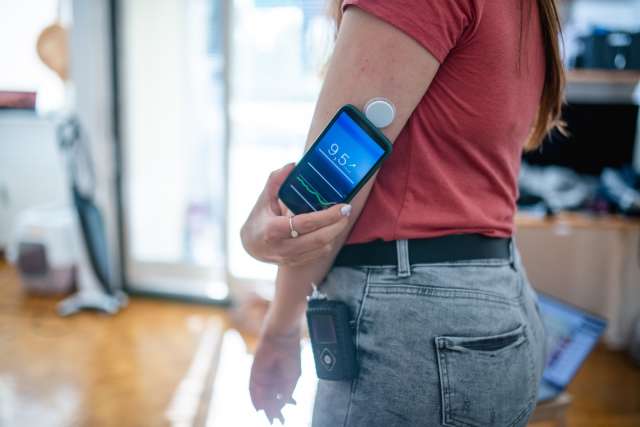Dr. Peter Lawrence, UCLA's chief of vascular surgery, picks up size 7 crochet hooks from a fabric store - not to make sweaters or scarves but to use in a new technique he has developed to treat varicose veins.
Early results of the new outpatient procedure, called light-assisted stab phlebectomy, or LASP, appear in a study in the October issue of the journal The American Surgeon.
More than 250 patients at UCLA have undergone Lawrence's procedure, which is designed to remove branch varicose veins from the thighs, calves and ankles. The technique combines two current varicose vein-removal methods - powered phlebectomy and stab phlebectomy - which excise veins through a small incision in the skin. Lawrence's method also employs transilllumination, in which a light source is placed beneath the skin to help highlight the veins during the procedure.
In addition, Lawrence has developed new, minimally invasive surgical instruments to remove the veins.
"This new, sutureless technique allows complete and rapid varicose branch vein removal with few missed varicose veins, little bruising and an excellent cosmetic result," said Lawrence, author of the study and director of the Gonda (Goldschmied) Vascular Center at the David Geffen School of Medicine at UCLA, which is a multidisciplinary center for the comprehensive prevention of diseases of the arteries and veins.
Varicose veins affect over 40 percent of the adult population, mostly women. The inherited condition occurs frequently in the legs, where weakened valves in the veins lack the strength to push blood back to the heart, allowing it to pool in the lower extremities.
During the LASP procedure, in which the patient is sedated but remains conscious, Lawrence makes a tiny incision near the varicose veins and threads a slender tube with a light source at its tip underneath the vein cluster.
A mixture of saline, lidocaine and epinephrine is infused into the area, providing a further anesthetic and "plumping up" the veins so that they are easily visible. The lights of the operating room are turned off so that Lawrence can see the veins illuminated under the skin.
"This is one of the first times that transillumination is used during the actual vein-removal procedure, which offers maximum visibility for the surgeon," said Lawrence, a professor of surgery at UCLA. "Usually the veins are mapped before the procedure, which is not as effective."
Lawrence then makes a very small incision immediately adjacent to a varicose vein. Taking a size 7 crochet hook that has been filed down and modified for the procedure, he passes it through the incision, hooks a vein and pulls it through the opening. After turning on the operating room lights, Lawrence assesses the vein, sets the crochet hook aside and grasps the vein at its base with a tiny mosquito clamp. Using a gentle circular motion, he dislodges the vein from the skin. Further incisions are made to remove remaining veins.
The empty vein channels are flushed with solution to help collapse them and prevent bruising and hematomas from any residual blood remaining in the channels. No sutures are used; this allows for continued drainage if needed. A compression dressing is applied to the affected area, and within an hour, the patient goes home with instructions to elevate the leg for 48 hours. The resulting scars look like small freckles.
Between 2004 and 2006, 268 patients received LASP treatment at UCLA - 49 of them underwent LASP alone, and 184 had it combined with another varicose vein-removal procedure. Researchers followed up with patients roughly a year after their procedures and found few early postoperative complications, such as infection, hematoma formation or severe pain requiring additional pain prescriptions.
According to Lawrence, LASP may provide lower residual varicose vein occurrence due to the greater ease in identifying the veins in the operating room through transillumination.
The next step is a larger study and longer follow-up with patients, Lawrence said.
Currently, various procedures are used to treat varicose veins, depending on their size. In addition to powered stab phlebectomy, other methods include laser and radiofrequency treatments, which employ heat or energy to seal off veins; vein ligation and stripping, surgical procedures that involving the tying off or removal of veins; and sclerotherapy, a method that involves the injection of a solution to dissolve smaller "spider" veins.
Lawrence said that LASP is often used to treat branch veins in the calf - in conjunction with either laser or radiofrequency procedures that are used to close the main saphenous vein that runs from the bottom of the foot to the thigh.
"We believe that LASP will provide surgeons with an additional tool to be used to treat varicose veins," he said. "With more options, we can better target individual treatment."
The study involved no outside funding.
Other study authors included Dr. Andrew J. Vardanian and Huynh L. Cao of the vascular surgery division at the David Geffen School of Medicine at UCLA.
Rachel Champeau
(310) 794-2270


